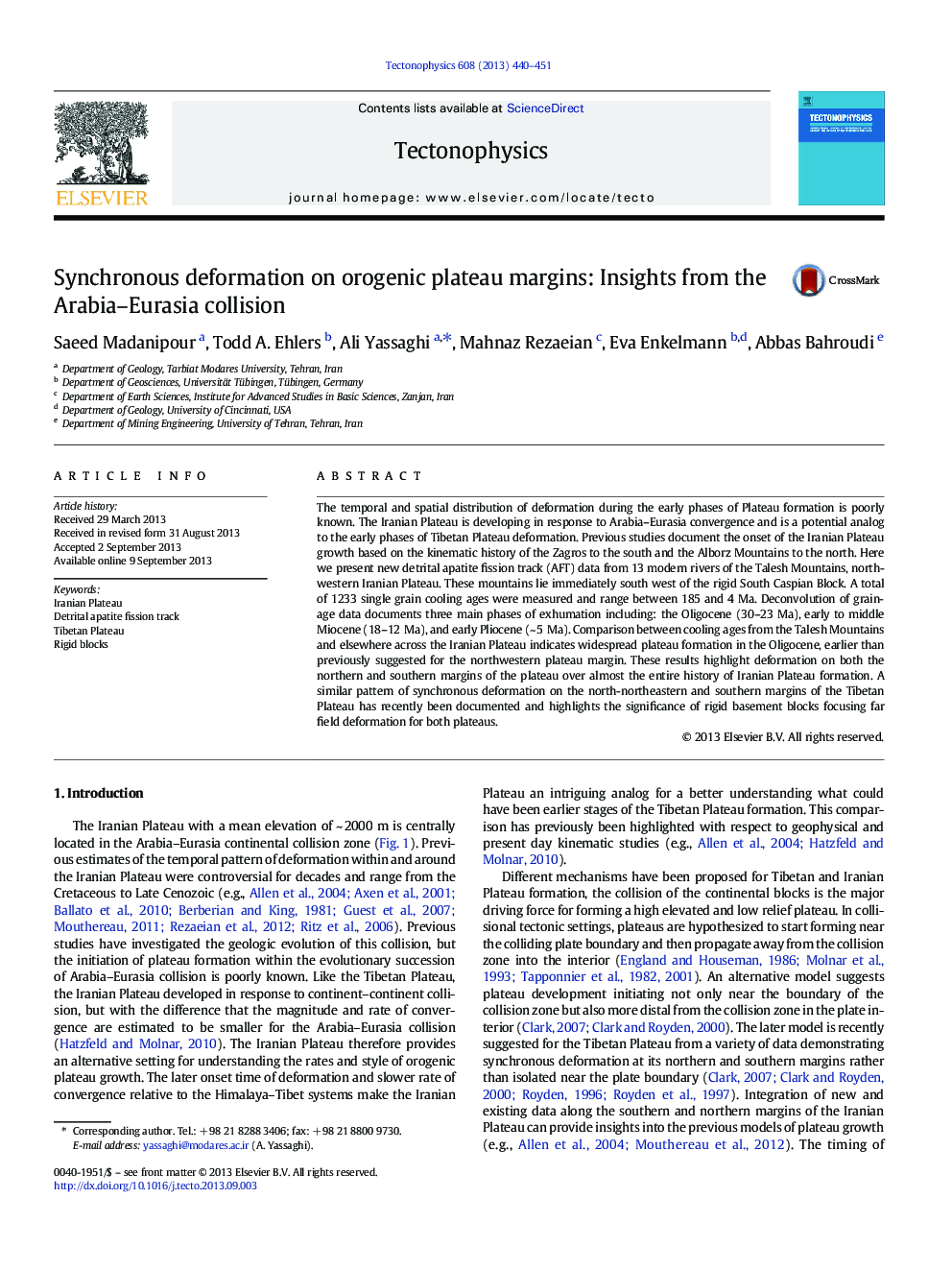| کد مقاله | کد نشریه | سال انتشار | مقاله انگلیسی | نسخه تمام متن |
|---|---|---|---|---|
| 6433964 | 1636779 | 2013 | 12 صفحه PDF | دانلود رایگان |
- AFT ages quantify at 3023, 18-12 and ~Â 5Â Ma deformation phases in the Talesh Mts.
- These deformation phases in the Talesh Mts. related to Arabia-Eurasia collision.
- Iranian Plateau wide cooling ages quantify its formation and growth pattern.
- Iranian and Tibetan plateaus experienced synchronous deformation at their margins.
- Rigid blocks focused the far field stresses transferred from the collision zone.
The temporal and spatial distribution of deformation during the early phases of Plateau formation is poorly known. The Iranian Plateau is developing in response to Arabia-Eurasia convergence and is a potential analog to the early phases of Tibetan Plateau deformation. Previous studies document the onset of the Iranian Plateau growth based on the kinematic history of the Zagros to the south and the Alborz Mountains to the north. Here we present new detrital apatite fission track (AFT) data from 13 modern rivers of the Talesh Mountains, northwestern Iranian Plateau. These mountains lie immediately south west of the rigid South Caspian Block. A total of 1233 single grain cooling ages were measured and range between 185 and 4Â Ma. Deconvolution of grain-age data documents three main phases of exhumation including: the Oligocene (30-23Â Ma), early to middle Miocene (18-12Â Ma), and early Pliocene (~Â 5Â Ma). Comparison between cooling ages from the Talesh Mountains and elsewhere across the Iranian Plateau indicates widespread plateau formation in the Oligocene, earlier than previously suggested for the northwestern plateau margin. These results highlight deformation on both the northern and southern margins of the plateau over almost the entire history of Iranian Plateau formation. A similar pattern of synchronous deformation on the north-northeastern and southern margins of the Tibetan Plateau has recently been documented and highlights the significance of rigid basement blocks focusing far field deformation for both plateaus.
Journal: Tectonophysics - Volume 608, 26 November 2013, Pages 440-451
